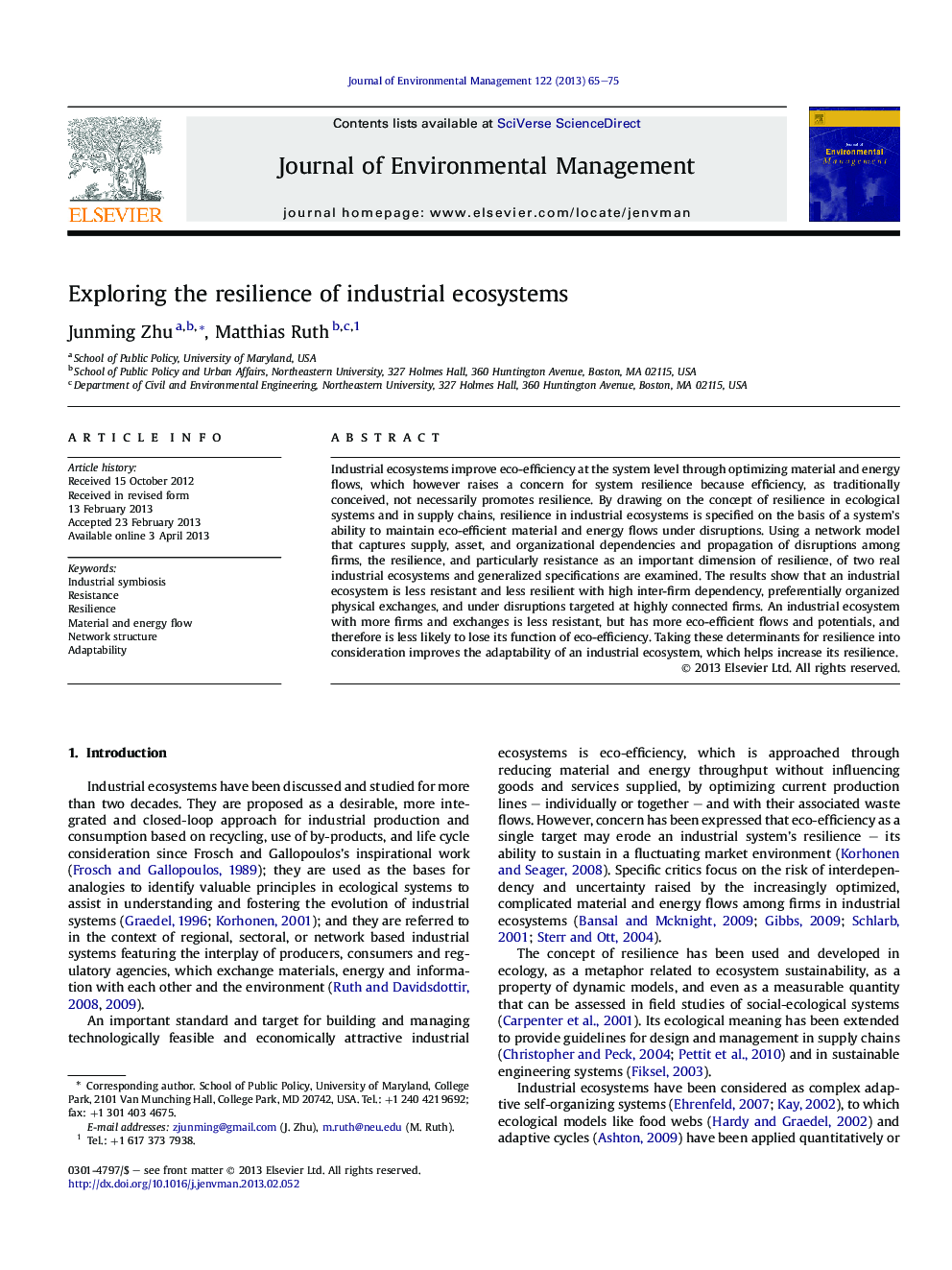| Article ID | Journal | Published Year | Pages | File Type |
|---|---|---|---|---|
| 1056338 | Journal of Environmental Management | 2013 | 11 Pages |
•Resilience features the ability to maintain eco-efficiency under disruptions.•Inter-firm dependency and preferential organization decrease resilience.•Larger numbers of firms and exchanges decrease resistance, but improve resilience.
Industrial ecosystems improve eco-efficiency at the system level through optimizing material and energy flows, which however raises a concern for system resilience because efficiency, as traditionally conceived, not necessarily promotes resilience. By drawing on the concept of resilience in ecological systems and in supply chains, resilience in industrial ecosystems is specified on the basis of a system's ability to maintain eco-efficient material and energy flows under disruptions. Using a network model that captures supply, asset, and organizational dependencies and propagation of disruptions among firms, the resilience, and particularly resistance as an important dimension of resilience, of two real industrial ecosystems and generalized specifications are examined. The results show that an industrial ecosystem is less resistant and less resilient with high inter-firm dependency, preferentially organized physical exchanges, and under disruptions targeted at highly connected firms. An industrial ecosystem with more firms and exchanges is less resistant, but has more eco-efficient flows and potentials, and therefore is less likely to lose its function of eco-efficiency. Taking these determinants for resilience into consideration improves the adaptability of an industrial ecosystem, which helps increase its resilience.
